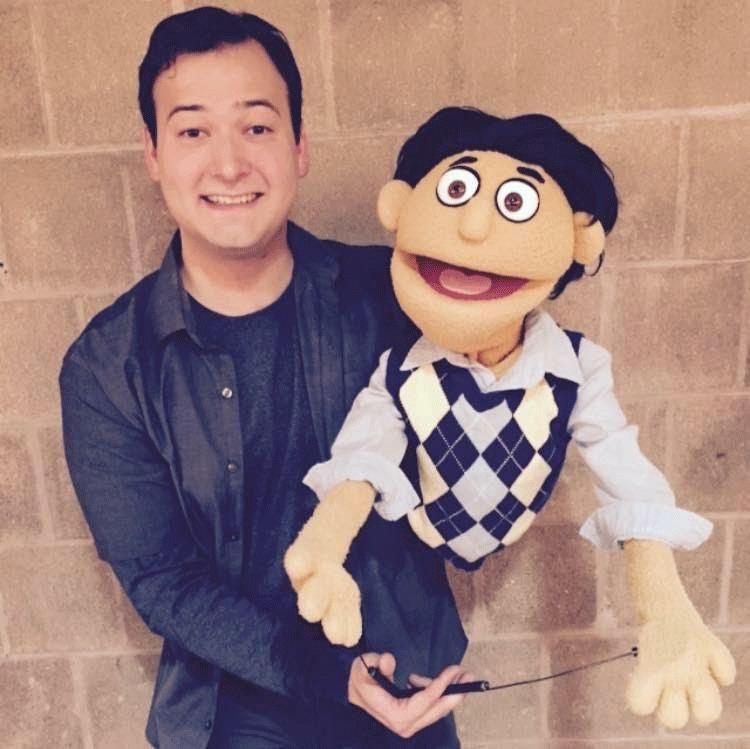I was four years old when The Monkees debuted on network television. I’m pretty sure I wasn’t watching that night, but it quickly it made its presence known to me. And it was love at first sight. Yeah, I liked the goofy show and the happy music, but it was the sight of the first boy I loved romantically that really won me over.
I often say that David Cassidy was my first great love (and he did make an overall larger impression since I was eight by the time I discovered him, far more worldly and mature), and there’s a case to be made for Paul McCartney who became a part of my world around the same time The Monkees did (thanks to a gatefold picture inside a little thing called Sgt. Pepper’s Lonely Hearts Club Band). But I honestly have to say that my first absolute, love-this-guy moment came when I saw him there, playing his guitar and wearing that crazy green wool cap. Yep, Michael Nesmith was the boy of my dreams.
I’ve seen The Monkees live a couple times over the years. The first was at the Coliseum when they visited Fort Wayne on their 20th anniversary tour in 1986; the second was about 15 years later when they visited the Embassy Theatre. Of course, I have yet to set eyeballs on Michael Nesmith since he very rarely performs with them anymore, and this year, when they visit the Foellinger Theatre for the Summer Concert Series, they will do so without Davy Jones who died in 2012, just months before he was scheduled to perform at the Foellinger. Clearly, The Monkees have a good relationship with fans in Fort Wayne, who obviously look forward to their visits, this time as part of their (yikes!) 50th anniversary tour.
It’s always been hard to define exactly what The Monkees are. Certainly now it’s all about the music, and they have a remarkable legacy of memorable hits which still make audiences really, really happy. But when they debuted in 1966, their cred as a band was dicey at best. Having been brought together to star in a television series which would capitalize on the pop and film success and hijinks of The Beatles, the group was considered “manufactured” in an era when that seemed wrong. (Many years later groups from Menudo and New Kids on the Block to Backstreet Boys and N’Sync made this practice pro forma.) But all four members of The Monkees – Nesmith, Jones, Mickey Dolenz and Peter Tork – had musical talent and a varying degree of musical and acting experience. Despite those differences – or perhaps because of them – the foursome did click in a big way, and the songs they recorded came from some of the biggest names in music, including Carole King and Gerry Goffin, Neil Diamond and John Stewart. The hits just kept coming.
But the group did chafe under diminished expectations and little respect from the industry and particularly from Don Kirshner who saw himself as the real brains behind the operation. By 1967, the group was already rebelling against Kirshner and recorded Headquarters, an album which they felt better reflected their musical sensibilities than the songs Kirshner was having them record. The album itself was successful on the charts when it was first released ,but with no hit singles (and the subsequent release only a couple months later of Sgt. Pepper’s), the case was made that Kirshner may have been a pain, but he knew hit music when he hears it.
The Monkees series lasted only two seasons, and within a year the group fragmented, with Tork leaving first, followed quickly by Nesmith. During their solo efforts, there was the occasional splash (who among us will ever forget Davy Jones going to prom with fan club president Marcia Brady?), but there was always hope for a reunion. The first signs of that came in the late 70s when Dolenz and Jones joined forces with Tommy Boyce and Bobby Hart for a quasi-Monkees reunion featuring two of The Monkees’ more successful songwriters. Billed as “The Guys Who Wrote Them and the Guys Who Sang Them,” that tour lasted two years and seemed the best that Monkees fans might get until 1986 when Tork joined Dolenz and Jones for a 20th anniversary reunion. Sparked by the rebirth of the 1960s series thanks to MTV and Nickelodeon, the group was suddenly hot again and cashed in on the love and nostalgia their music and series had inspired. Nesmith joined occasionally, but by this time he had built his own empire on music video production. Nesmith also didn’t need the cash since his mother had invented a little thing called Liquid Paper, a now-quaint substance used to erase mistakes on typewritten documents. His inheritance pretty much meant he could crank out avant garde productions and drop in on his fellow Monkees as he wished.
Nesmith has revisited his Monkee roots from time to time, including on the group’s Justus album in 1996. And after Jones’s death in 2012, he again performed with the group in tribute to their fallen member. But when The Monkees visit the Foellinger, it will be featuring Dolenz and Tork, and they bring more to the performance than just nostalgia. Their recent release, Good Times, is part of their golden anniversary celebration and features previously unreleased tracks, new songs from contemporary songwriters and even one Nesmith composition.
It’s certain that some of these songs will be played at the Foellinger next week, but you can also bet that all of The Monkees songs you have loved for a half-century will be the focal point. While only two original members remain part of the active group, the fun and spirit of The Monkees is front and center whenever they perform. And these days especially, it’s hard not to love guys who are just too busy singing to put anybody down.
 Submit Your Event
Submit Your Event
